Naming Ionic Compounds Worksheet
Are you struggling to master the naming of ionic compounds? Look no further! This blog post will provide you with a helpful worksheet that focuses on naming these compounds. Naming Ionic Compounds Worksheet is the best worksheet that can be used by chemistry teachers to teach students the concept of ionic compounds and the procedure for naming them. Students can name various ionic compounds on the worksheet and understand the chemical formulas of these compounds. Whether you are a chemistry student needing extra practice or a teacher looking for a resource to reinforce this concept with your students, this worksheet is perfect for you!
Table of Images 👆
- Naming Ionic Compounds Worksheet Answers
- Practice Naming Ionic Compounds Worksheet
- Naming Compounds Worksheet
- Chemistry Nomenclature Naming Compounds Flowchart
- Ionic Compounds Formulas and Names
- Naming Ionic and Covalent Compounds Worksheet
- Formulas with Polyatomic Ions Worksheet Answers
- Polyatomic Ions Ionic Compounds Worksheet
- Ionic Bonds Gizmo Answer Key
- Compound Names and Formulas Worksheet
- Naming Organic Compounds Worksheet Answer
- Naming Compounds Mixed Ionic and Covalent
- A Carbon Monoxide as Formula
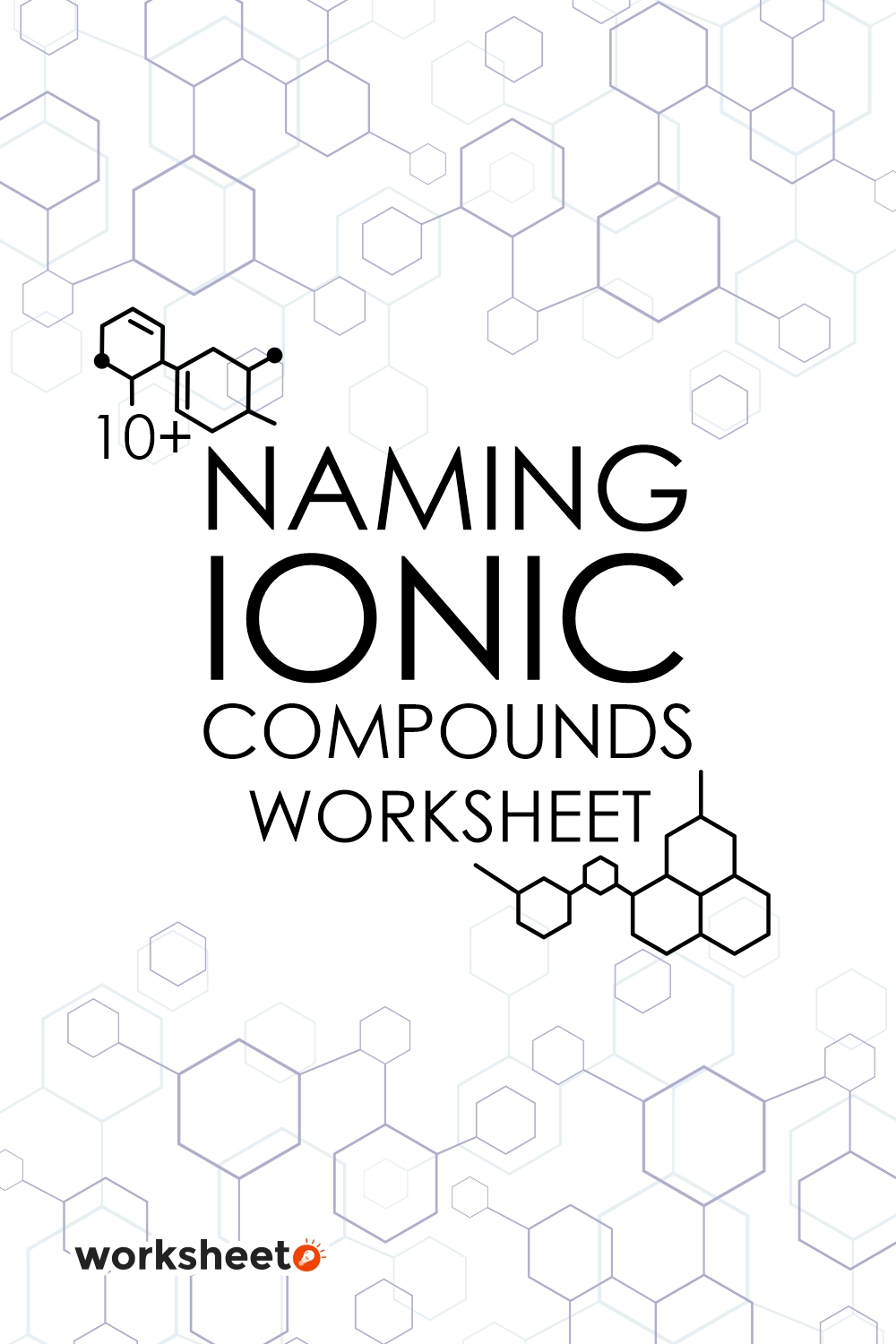
More Other Worksheets
Kindergarten Worksheet My RoomSpanish Verb Worksheets
Cooking Vocabulary Worksheet
DNA Code Worksheet
Meiosis Worksheet Answer Key
Art Handouts and Worksheets
7 Elements of Art Worksheets
All Amendment Worksheet
Symmetry Art Worksheets
Daily Meal Planning Worksheet
Help students name ionic compounds easily with the Naming Ionic Compounds Worksheet!
What is an Ionic Compound?
Ionic compounds are compounds composed of ions formed from ionic bonds and electrostatic forces. Ionic compounds consist of cations (positively charged ions) and anions (negatively charged ions).
Ionic compounds can be obtained from constituent ions through dissolving, freezing, precipitation, electron transfer of reactive metals with reactive non-metals, and reactions of solid substances. Ionic compounds have high boiling and melting points.
In ionic compounds, an electron transfer process occurs. This is the main characteristic of electron compounds. The transfer of electrons occurs from one atom to another atom. Atoms that gain electrons will have a negative charge and atoms that lose electrons will have a positive charge.
An example of an ionic compound is NaCl. Sodium has an electron configuration of 2, 8, 1. Sodium will be more stable if it loses 1 electron. Meanwhile, Cl has a configuration of 2, 8, 7 and will be stable if it gets 1 electron.
For Na and Cl, Na gives 1 electron and Cl gets 1 electron. Because it gives 1 electron, Na becomes positively charged and Cl becomes negatively charged. Na+ and Cl- combine to form NaCl.
How to Name Ionic Compounds?
In chemistry, there are two types of naming compounds; IUPAC (International Union of Pure and Applied Chemistry) and the trivial system. IUPAC is the official nomenclature for chemical compounds used by chemists around the world. Meanwhile, the trivial system is only used in certain countries, so each country has its trivial system.
Here we will discuss the steps for naming ionic compounds using the IUPAC system. In general, naming ionic compounds based on IUPAC is done by writing the name of the metal element first. Then, write the name of the non-metallic element with the ending “-ida.” An example is as follows.
- NaCl: Sodium Chloride
- KCl: Potassium Chloride
If you find an ionic compound with a metal oxidation number of more than one, use the STOCK system. So, the naming uses Roman numerals, the ending "o" for cations with low oxidation numbers, and the ending "i" for cations with high oxidation numbers. The example is:
|
Binary Compound Formulas |
Sistem STOCK |
Suffix System |
|
Pb2O |
Plumbum (I) oksida |
Plumbo oksida |
|
CrCl3 |
Kromium (III) klorida |
Kromi klorida |
From this example, you know the term “binary compound.” Binary compounds are compounds composed of monatomic metal cations and monatomic nonmetal anions.
What are the Uses of Ionic Compounds in Real Life?
Ionic compounds are widely used in life. Some examples of ionic compounds that are useful in real life are:
- Toothpaste (NaF): Toothpaste contains sodium and fluorine ion compounds.
- Salt (NaCl): This is the ionic compound most people are familiar with. NaCl is a binary ionic compound formed from sodium cations and chlorine anions.
- Baking Soda (NaHCO3): This compound is also called sodium bicarbonate which is used to make cakes and bread.
- Bleach (NaOCl): Sodium hypochlorite is a compound used as a clothing bleach and disinfectant.
- Limestone (CaCO3): Calcium carbonate is formed from calcium ions and CO3 ions (polyatomic ions).
What is Naming Ionic Compounds Worksheet?
Naming Ionic Compounds Worksheet is a worksheet used to help students learn how to name ionic compounds. This worksheet can be used by high school chemistry students or college chemistry students. Through this worksheet, students can understand the naming rules of ionic compounds. Practice exercises using this worksheet must be done regularly so that students master naming ionic compounds.
A naming ionic compounds worksheet can teach students specific strategies and approaches such as understanding the charges of ions, using the crisscross method, and memorizing common polyatomic ions to make the process of naming ionic compounds easier and more efficient.
What are the Benefits of Using Naming Ionic Compounds Worksheet?
- Using a naming ionic compounds worksheet can benefit students by providing them with practice and repetition in applying the rules for naming these compounds, helping them reinforce their understanding and mastery of the concepts involved. The worksheet can serve as a reference tool that allows students to review the rules and refer back to examples as they encounter more complex compounds.
- A naming ionic compounds worksheet can help students practice their problem-solving skills and critical thinking abilities by providing them with a real-world application of chemical naming rules and requiring them to analyze and apply those rules to different compounds.
- Using a naming ionic compounds worksheet can help students retain and apply their knowledge of naming rules in future chemistry studies or exams by providing them with practice in identifying and naming various compounds, enhancing their understanding and proficiency in the topic. The repetitive nature of completing the worksheet can reinforce the concepts and improve memorization, leading to better retention and application of naming rules in future studies or exams.
- Some common mistakes students make when naming ionic compounds include not properly balancing charges and failing to use the correct suffixes for certain elements. A worksheet can help them avoid these errors by providing practice problems that require them to correctly identify the charges of ions and apply the correct naming rules for different elements.
Ionic compounds are simple compounds These compounds have chemical formulas and special naming systems. To learn it easily, students can use Naming Ionic Compounds. Naming compounds using this worksheet will train students to understand the concept of ionic compounds easily and develop their memory skills which are very useful for their future education.
Have something to share?
Who is Worksheeto?
At Worksheeto, we are committed to delivering an extensive and varied portfolio of superior quality worksheets, designed to address the educational demands of students, educators, and parents.




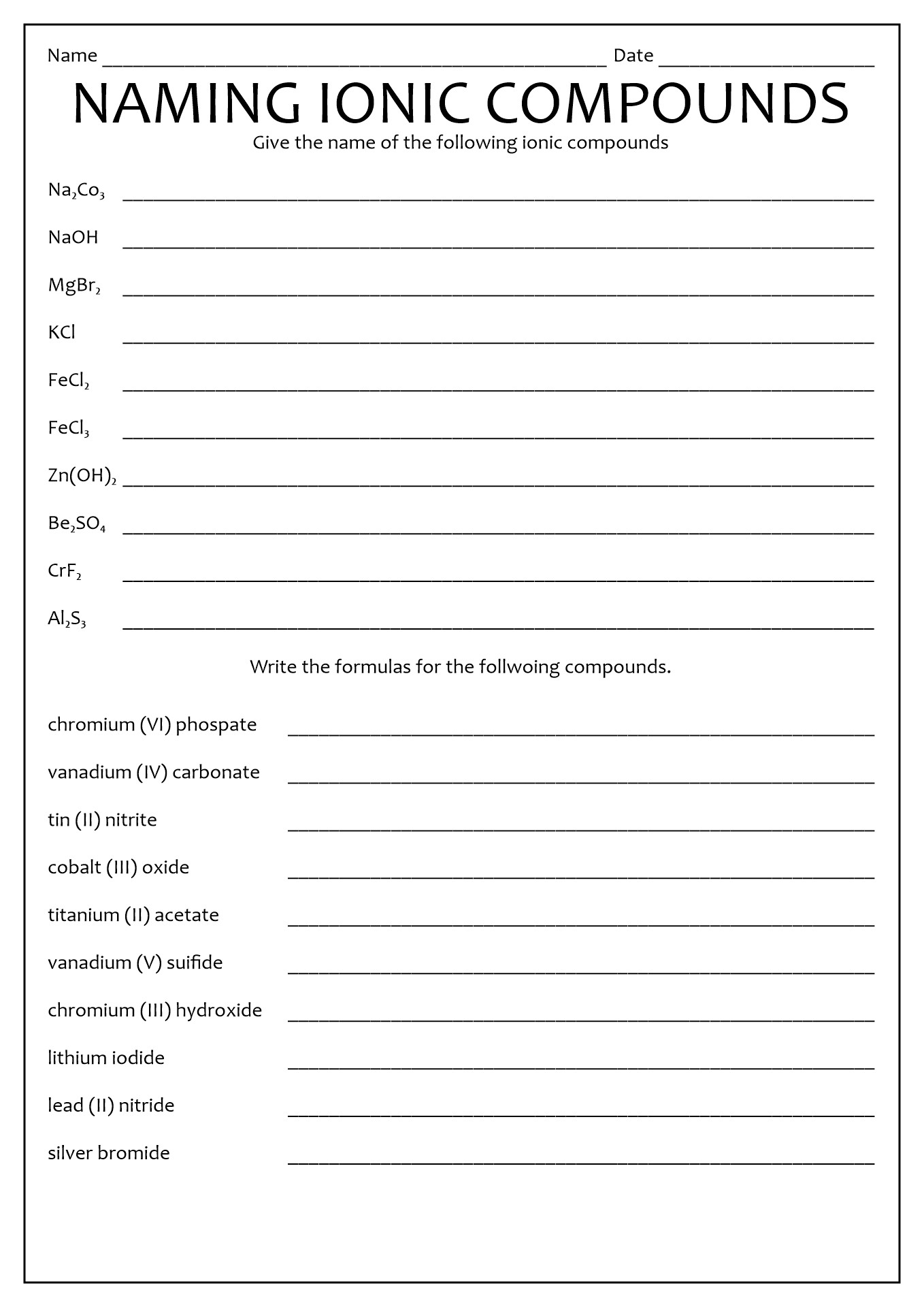
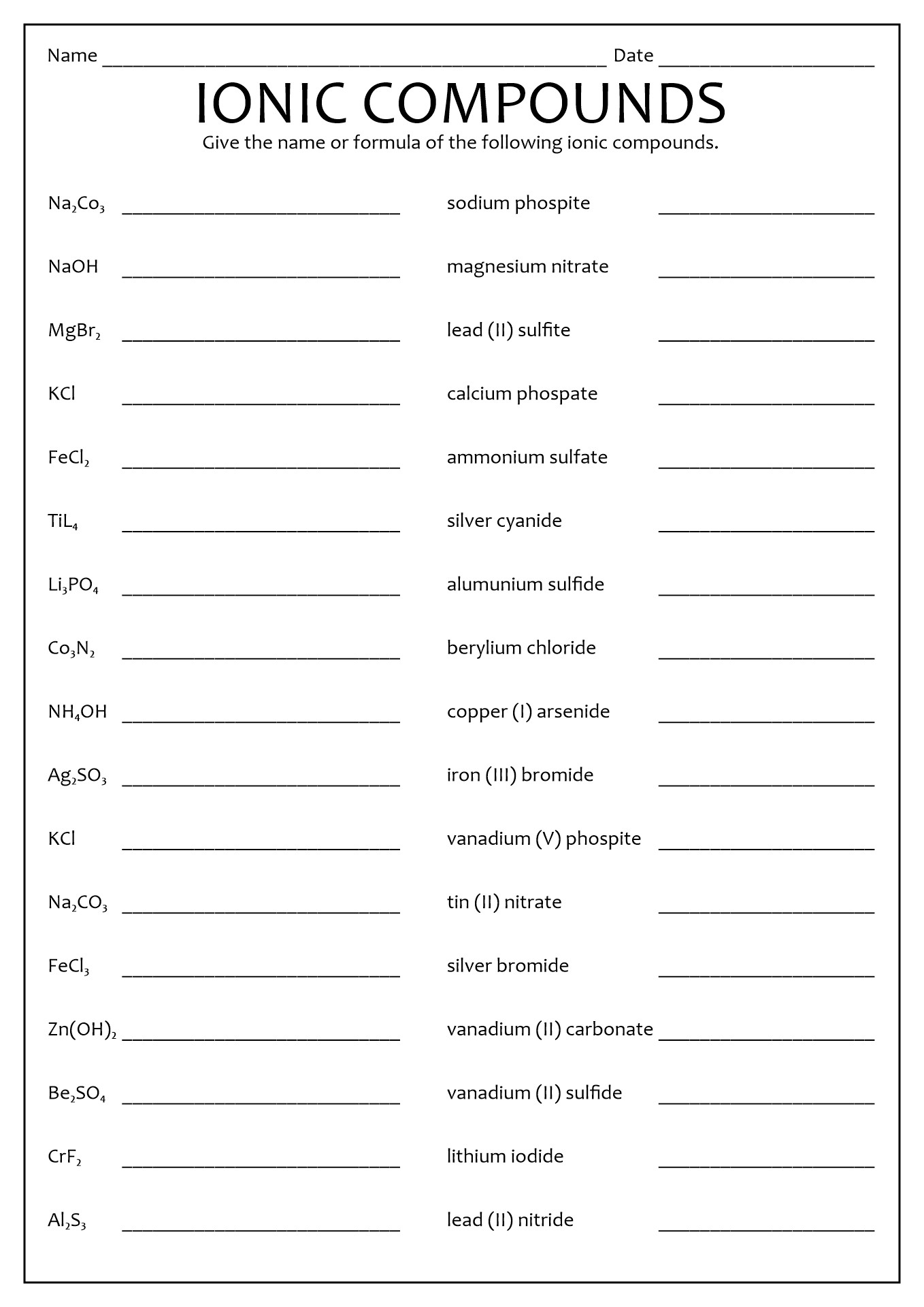
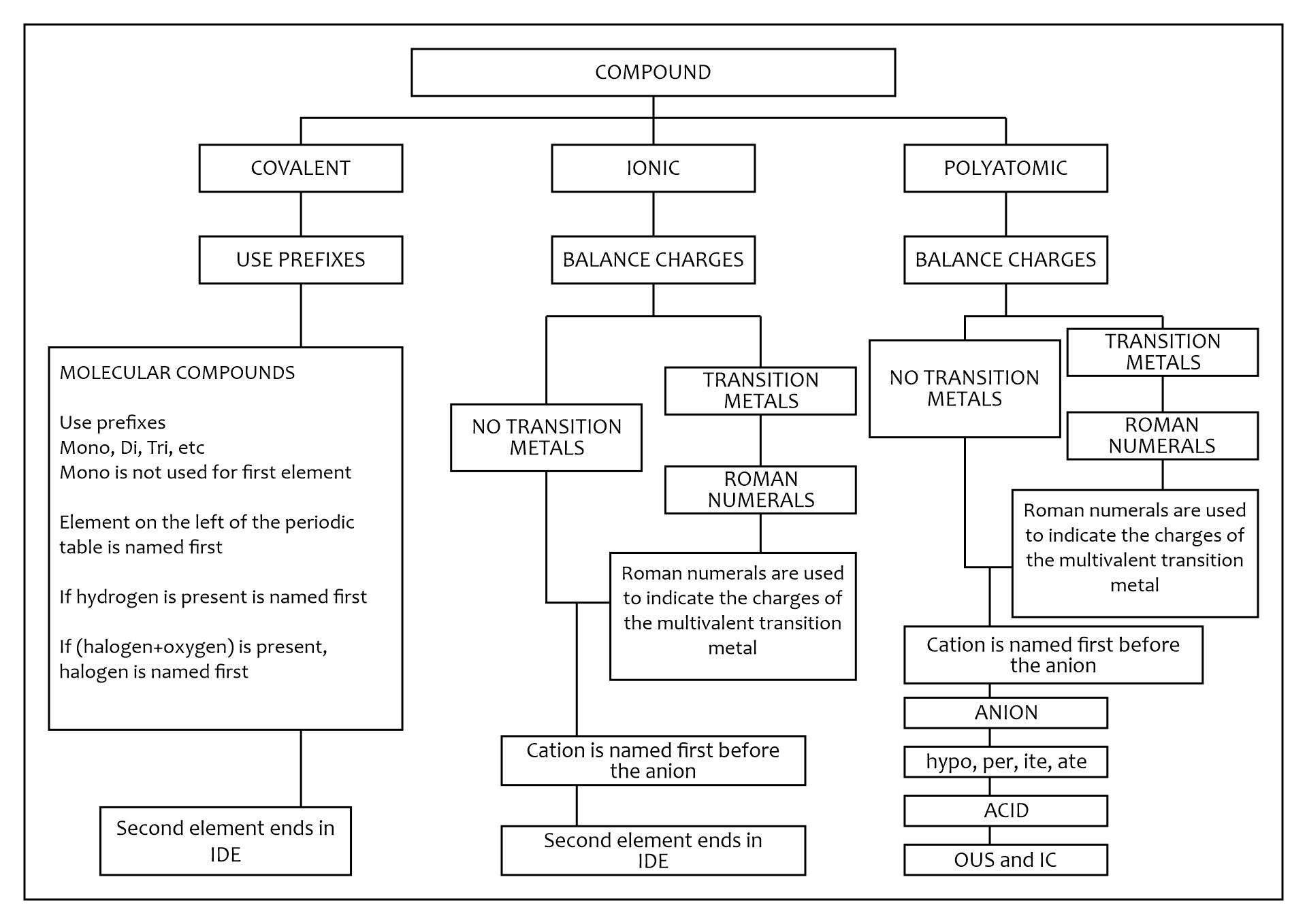
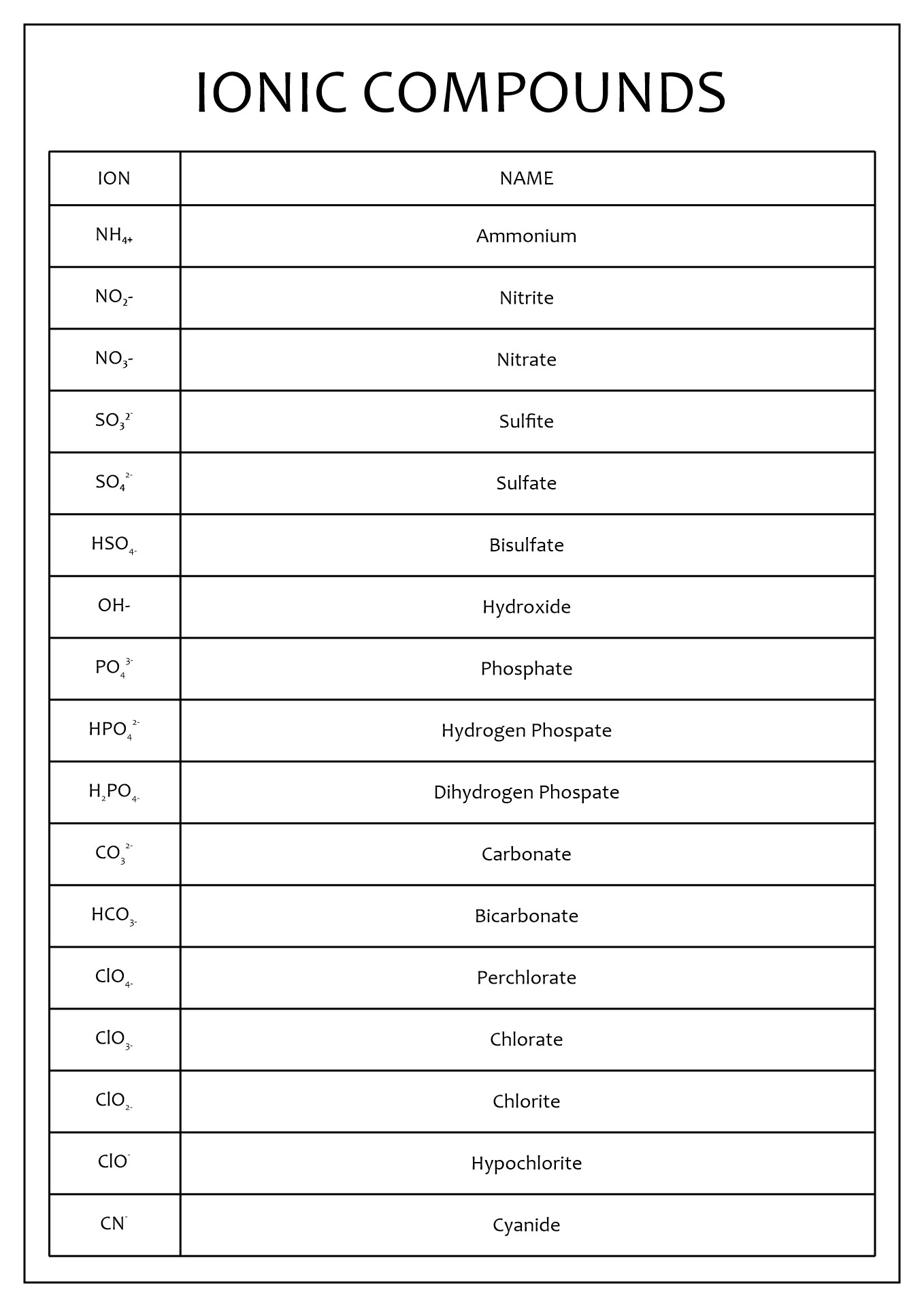
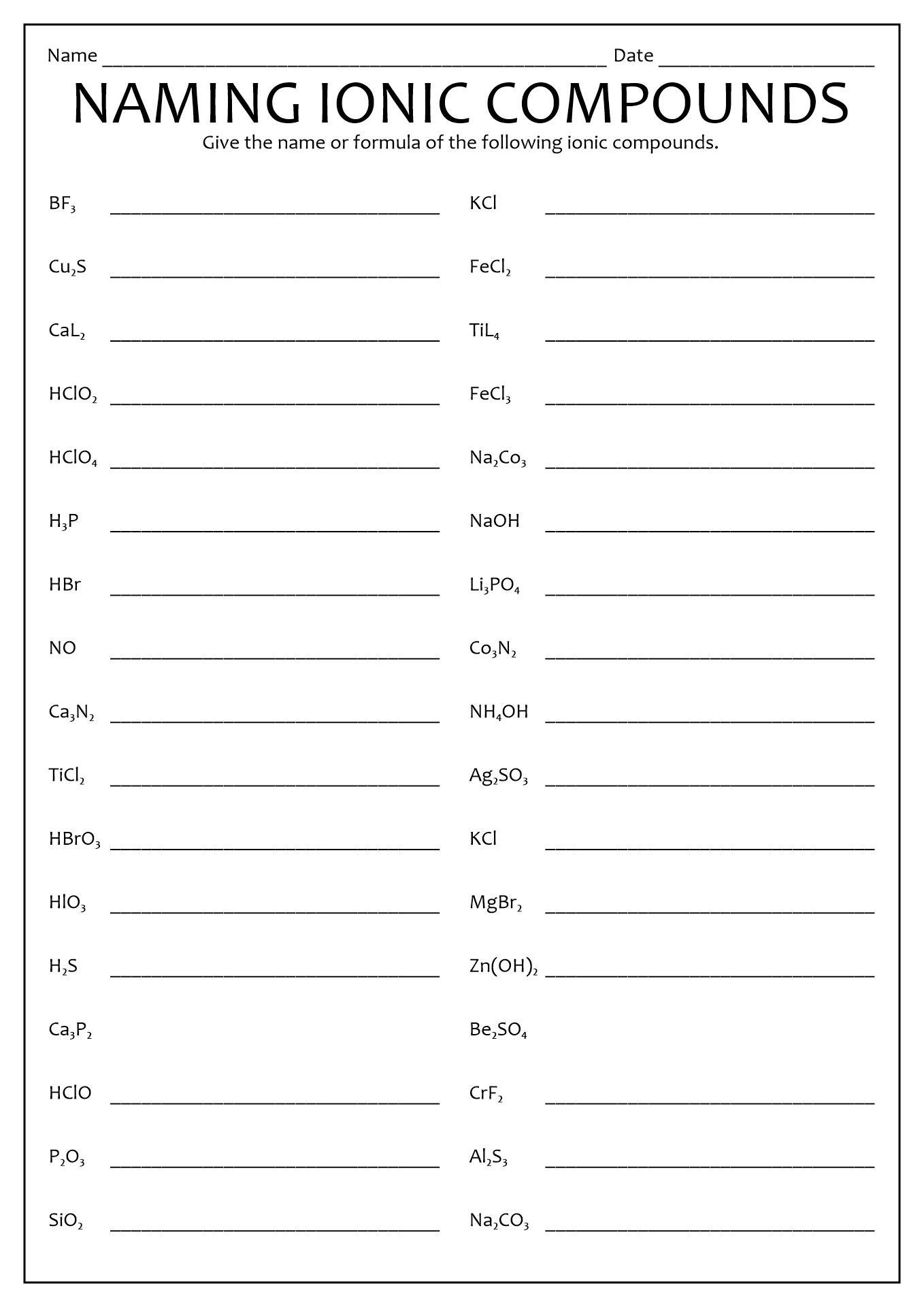
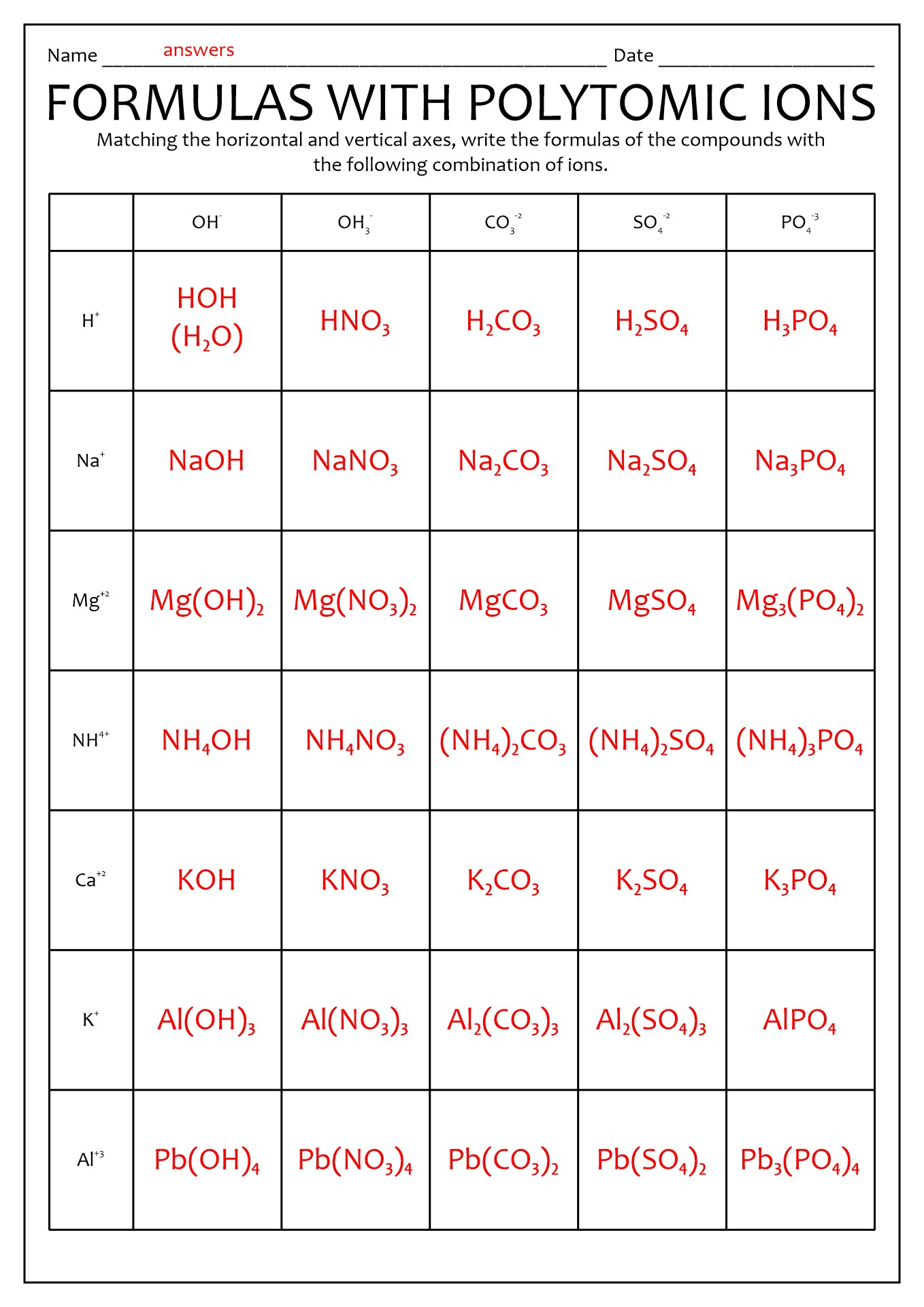
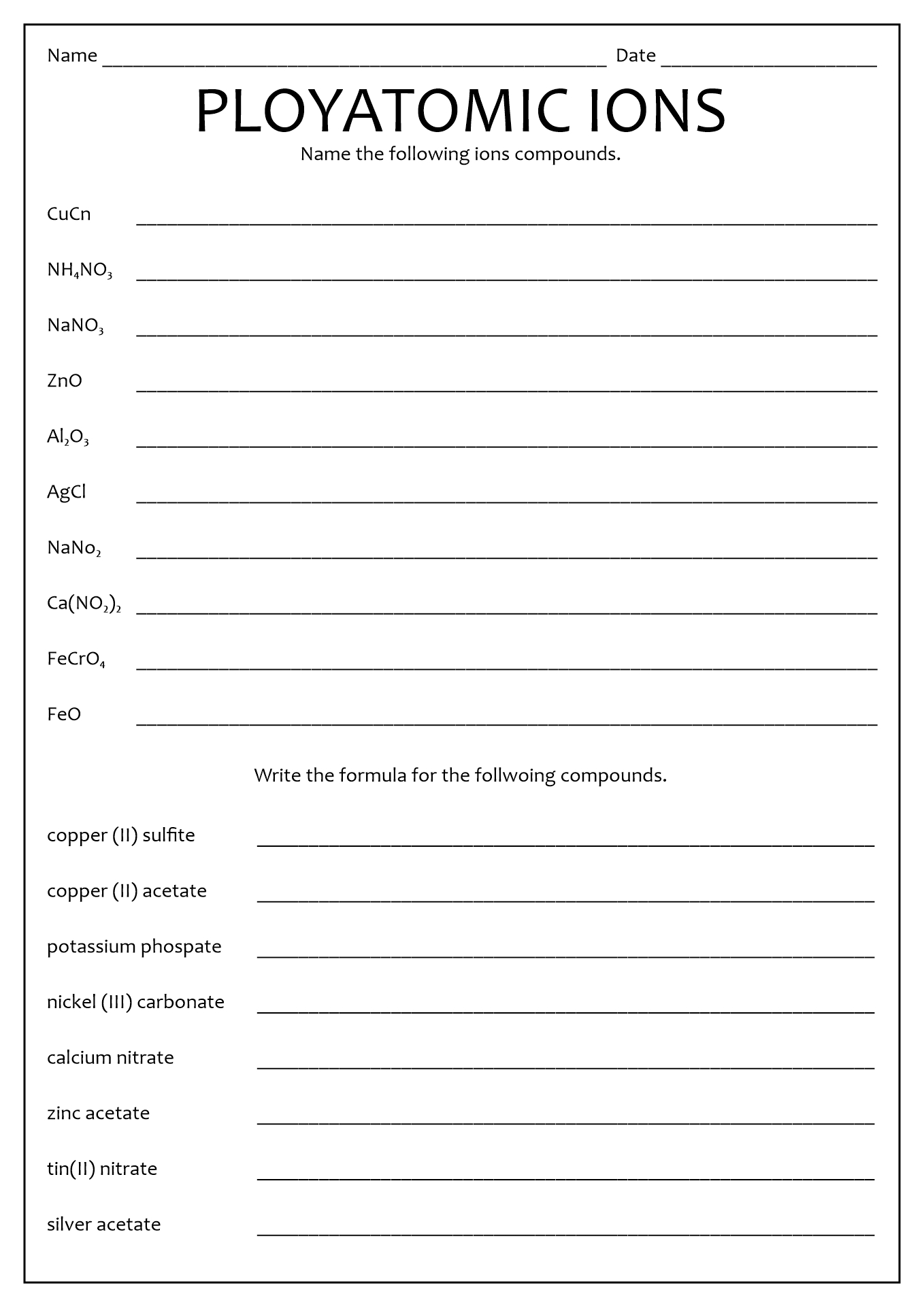
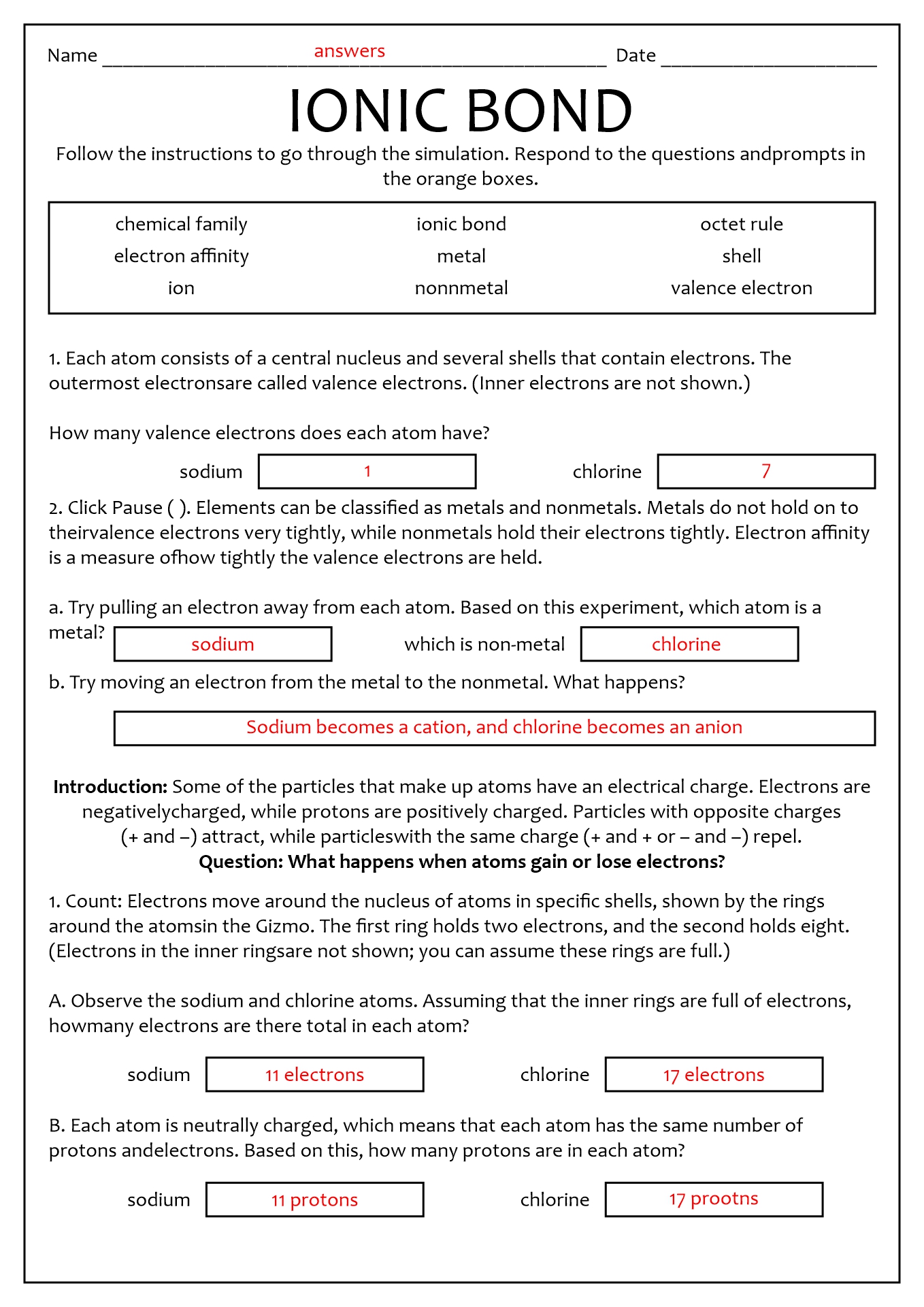
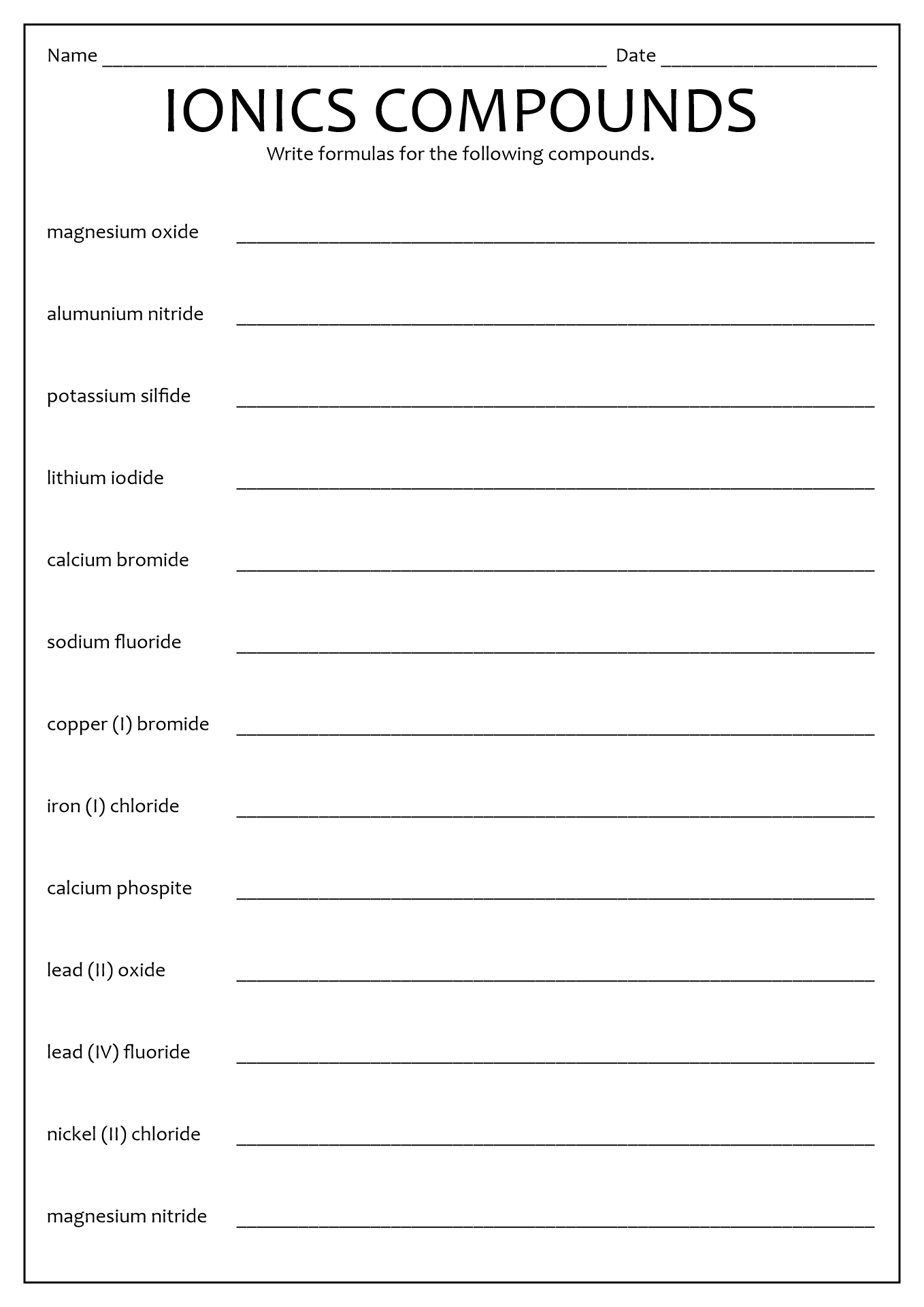
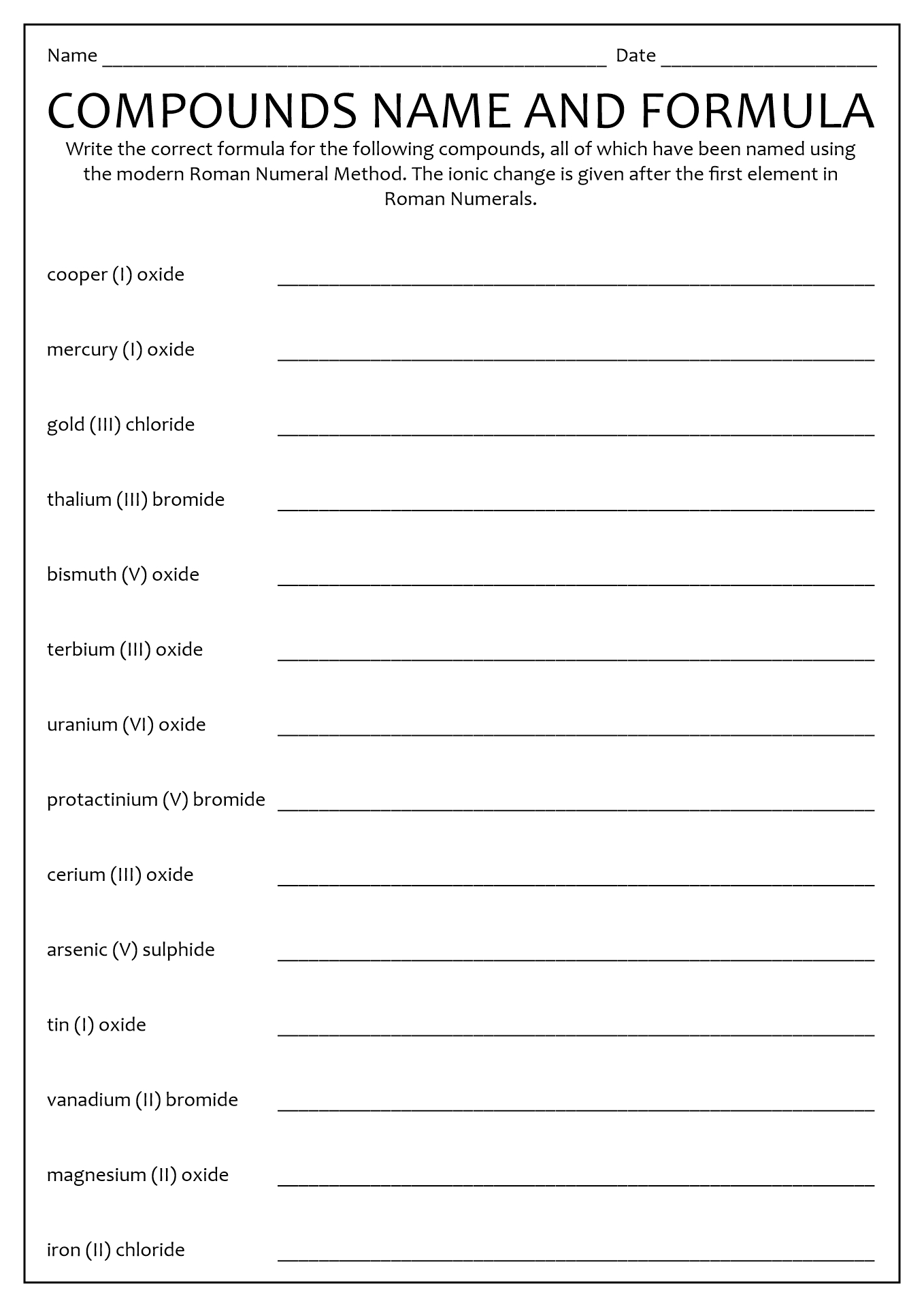
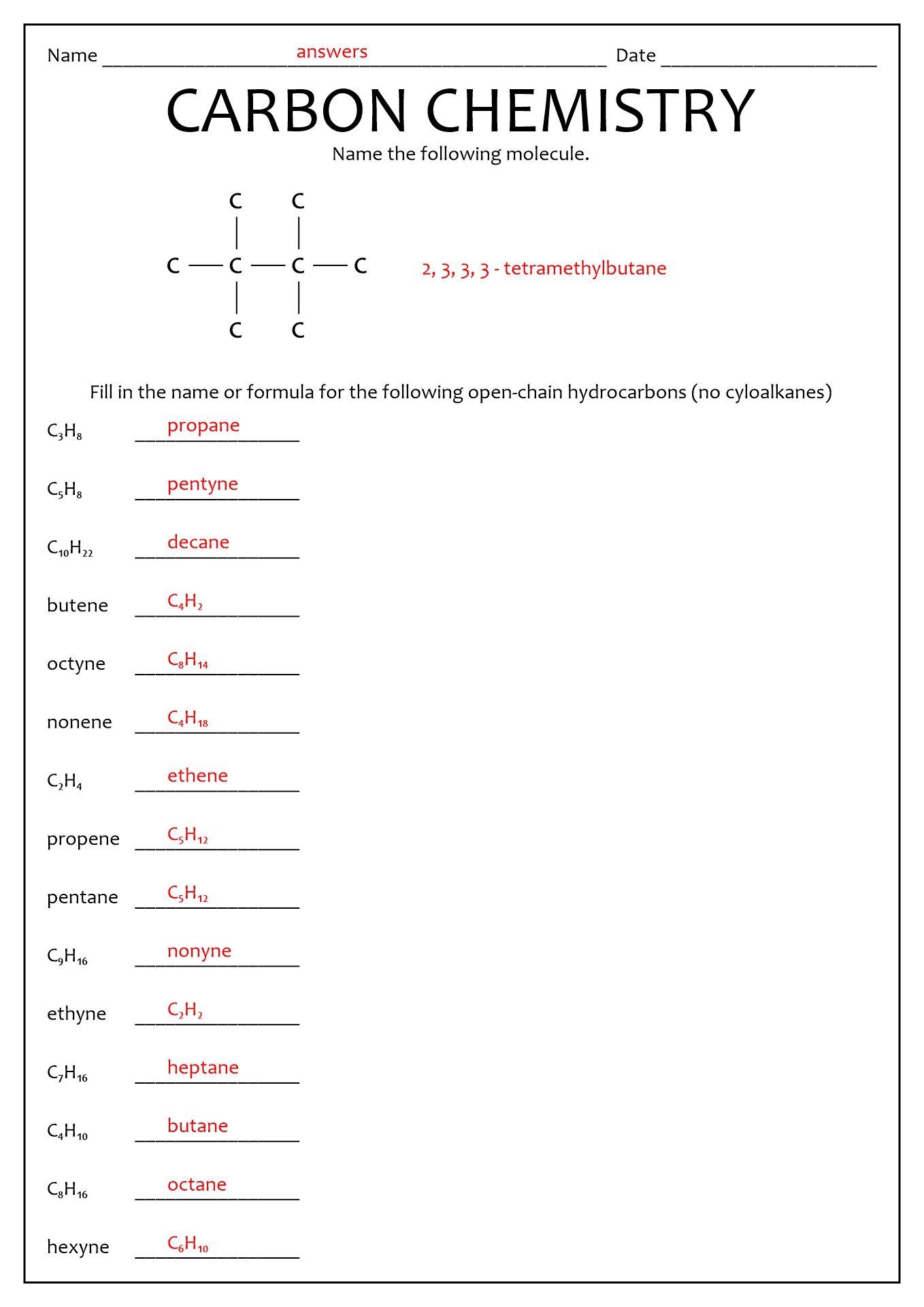
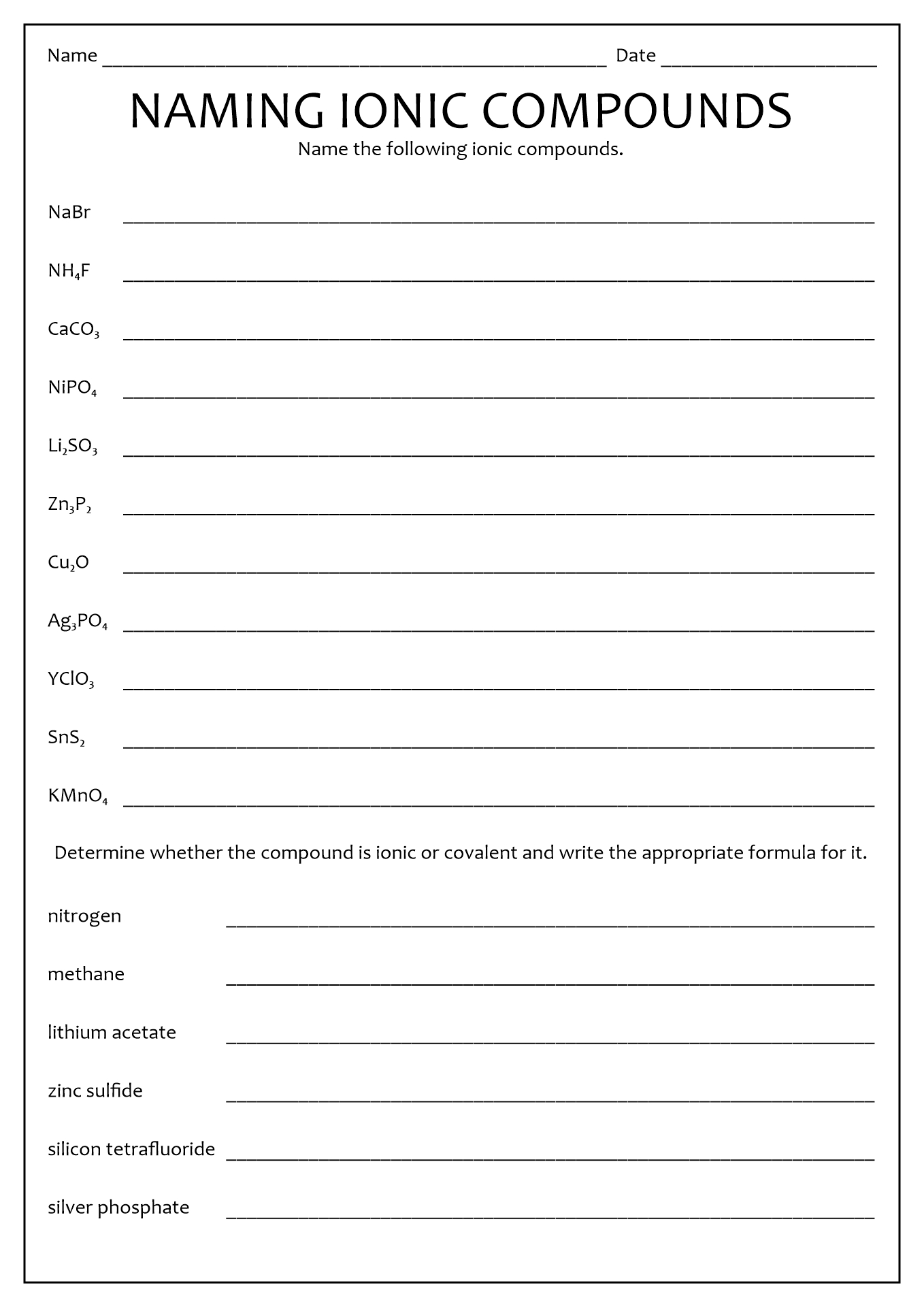
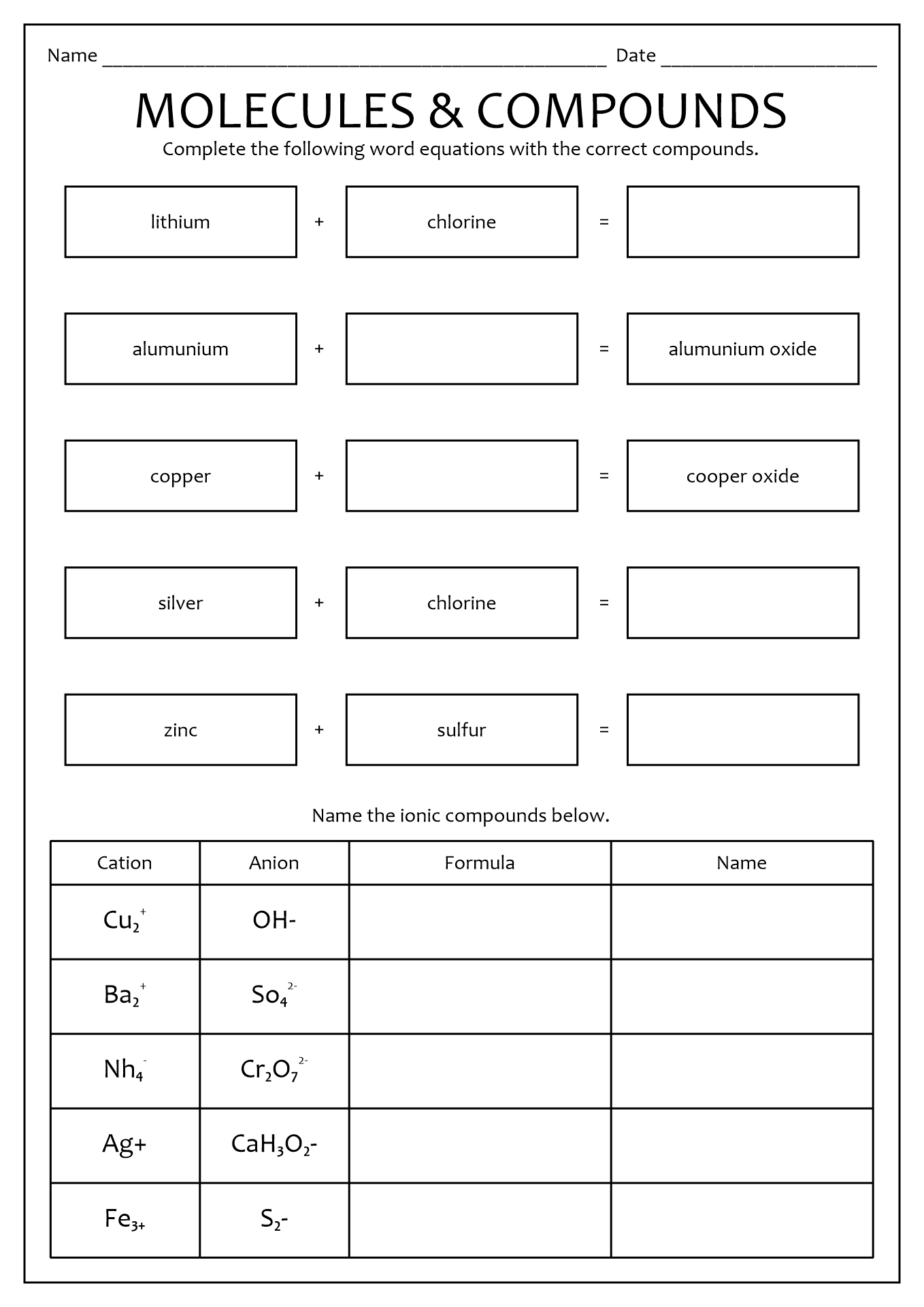
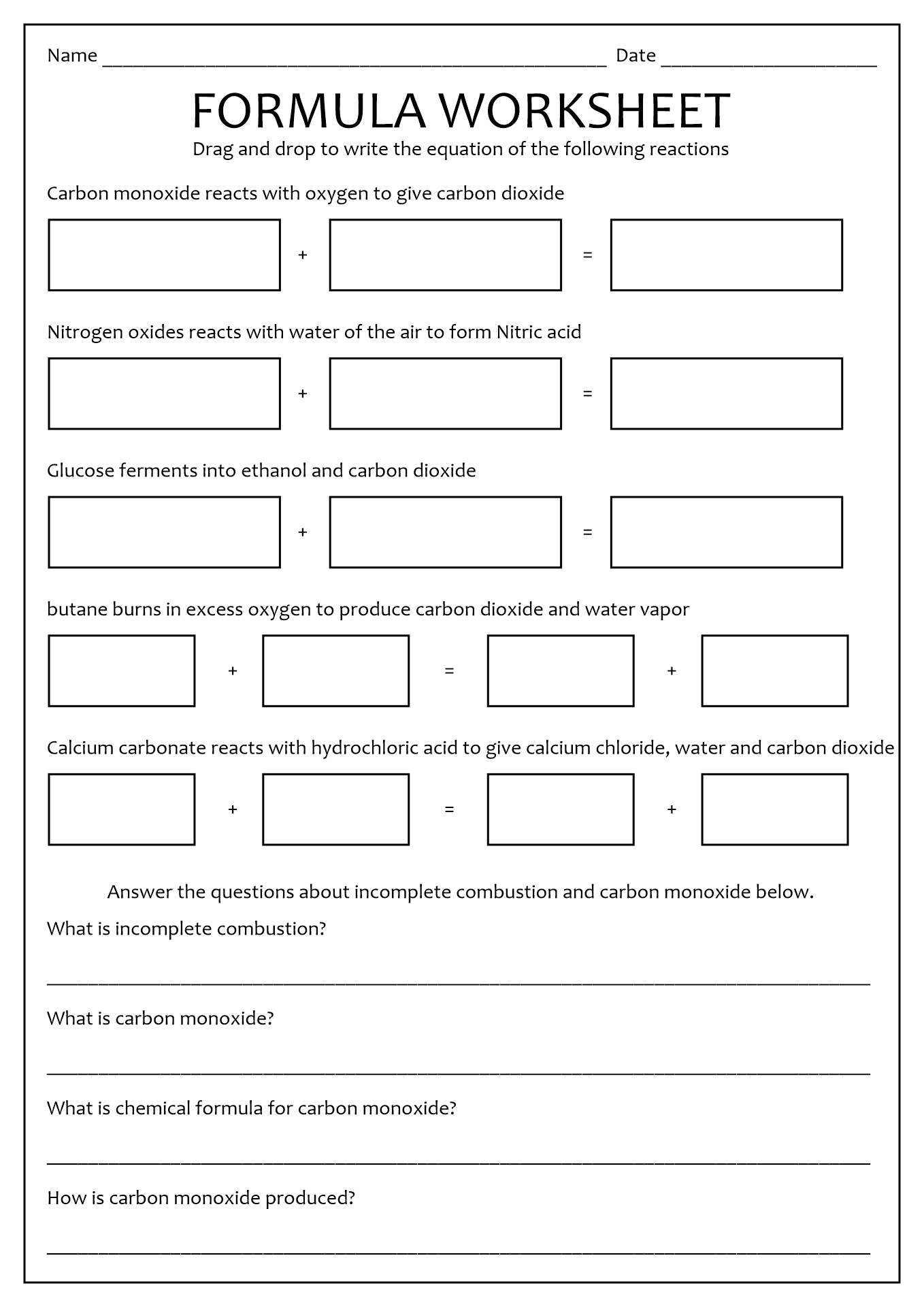














Comments
This printable worksheet on naming ionic compounds is a valuable tool for teaching students the rules and formulas used to correctly name compounds, making the learning process easier and more efficient.
Thank you for creating such a helpful and well-organized Naming Ionic Compounds Worksheet. It's a great resource for practicing and mastering this important concept.
Great worksheet for practicing naming ionic compounds! Provides clear examples and exercises to help solidify concepts. Highly recommend for anyone looking to improve their understanding of this topic.